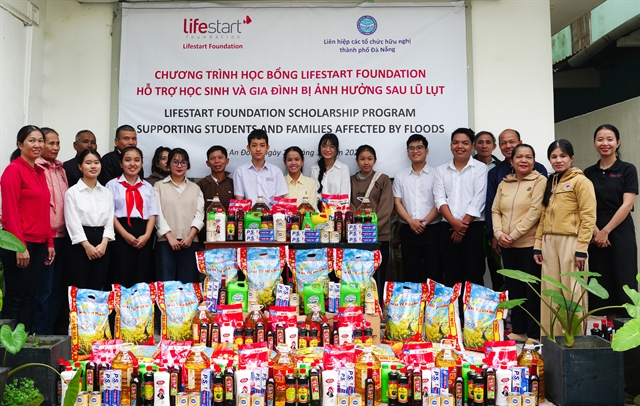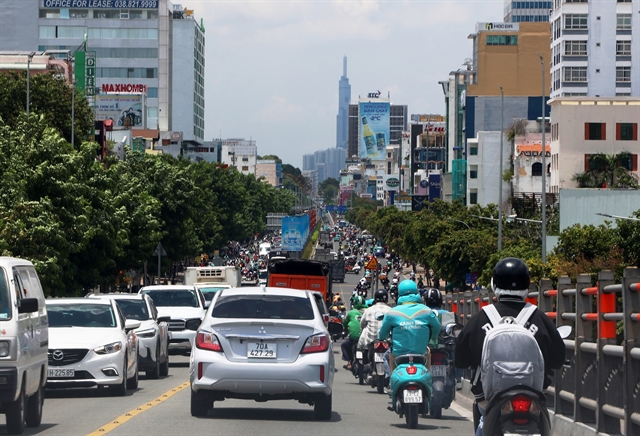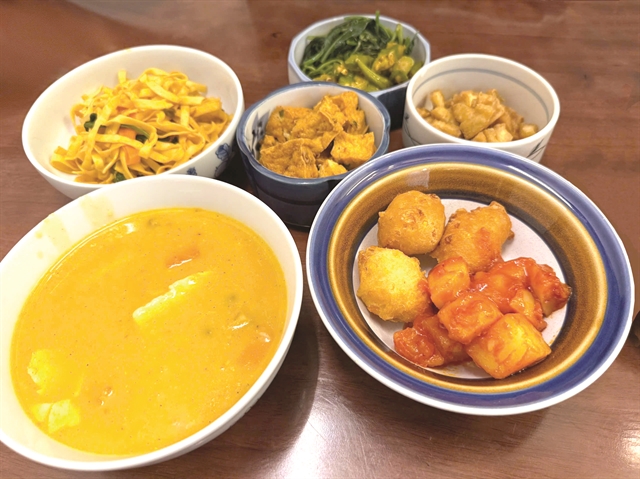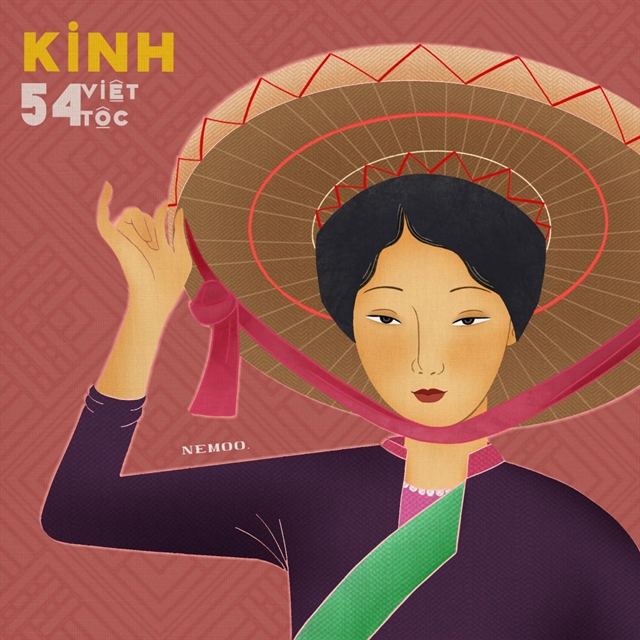 Features
Features
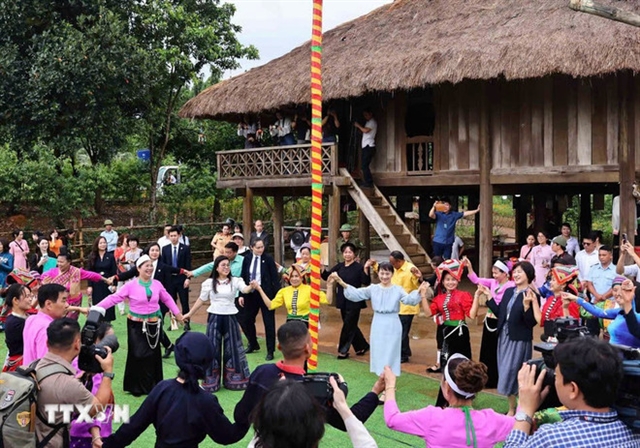
The Trà Sư cajeput forest offers a captivating respite from urban madness, Bùi Quỳnh Hoa finds.
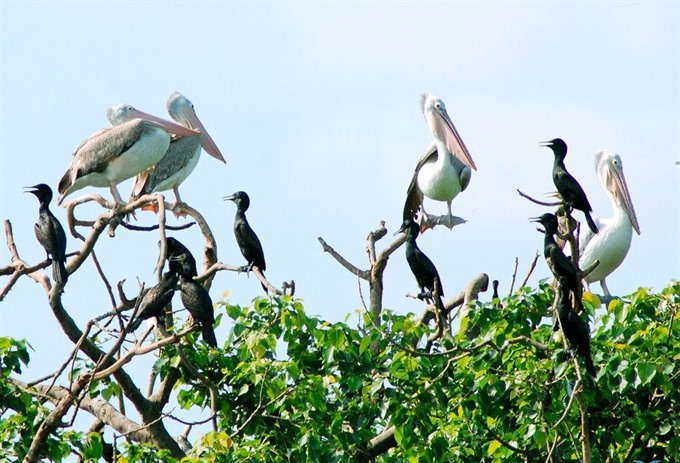 |
| Perched: Storks and pelicans can be seen atop the trees. |
We were hungry and exhausted after a two-hour flight followed by a six-hour bus ride, but a comfortable night’s rest in the lap of nature awaited us.
Or so we thought as we reached Châu Đốc Town in An Giang Province at 10 in the night.
However, the condition of the guest houses, neither clean nor well-equipped, dampened our enthusiasm about discovering the charms of the Trà Sư cajeput forest.
Our mood had not improved much the next morning as we set out for the forest in Văn Giáo Commune, Tịnh Biên District, about 20km from Châu Đốc Town and 10km from the border with Cambodia.
Once we reached there, however, nature waved a magic wand and we saw stars!
The immense wetland with its emerald-green duckweed carpet and dense cajuput forest was spellbinding, as a boat took us on an ethereal ride. The air was fresh and the sounds of birds, insects and other fauna were music to the ears. Amidst the charming green, a bright yellow field of điên điển (sesbania sesban) flowers and lots of pink lotuses made us feel we were part of an incredible, live painting.
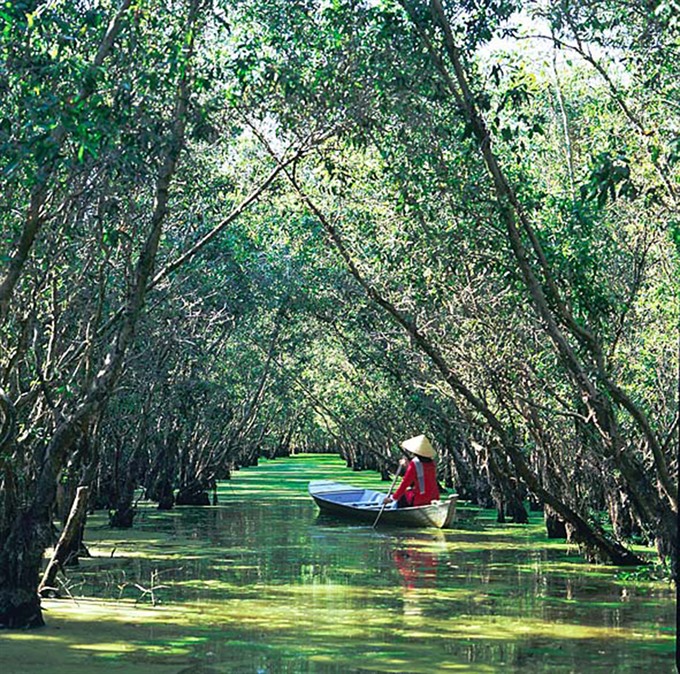 |
| Out of this world: The scenery in Trà Sư Forest is spellbinding. File Photo |
And the further we went into the forest, the more peaceful we felt.
It is difficult to imagine that this forest was planted in 1983 by rangers and opened to tourism in 2005. The 845ha forest is now home to 140 plants, 70 birds, 11 mammals, 23 fishes and 20 reptiles.
Two species of birds in this forest are listed in the Red Book of endangered species – the painted stork and anhinga (or snake bird).
According to the forest management board, every year, from August to November, river banks throughout the Mekong Delta are submerged by flooding. The water doesn’t come all of a sudden but rises gradually, so locals call it the “water rising season”.
“The peak of the water rising season from late October to November is ideal to explore this area’s natural beauty,” our boatwoman, Nguyễn Thị Ngọc Thế, told us.
So we were lucky. We’d come to the forest at the right time, when the sun cast a golden glow on the emerald duckweed carpet, the enchantment went up another notch.
“When we get tired of modern life, we should take refuge here, in Trà Sư Forest,” said Lê Yên Chi from Hà Nội.
 |
| A good time: The Trà Sư forest attracts people from all over the world. VNS Photo Bùi Quỳnh Hoa |
There are two ways to explore Trà Sư: going around the forest on a motorbike or by boat. The boat tour costs VNĐ65,000 (about US$3) per person.
After moving into the forest core on a motor boat, we transferred to a small rowing boat to get deeper into the bird sanctuary. We were requested to wear conical hats to avoid bird droppings on our heads.
Hundreds of thousands of birds including stork, herons, teals, rails and corks perched on branches or flew over our heads. Thousands of bird nests had been built on the trees. Many young birds were wet after falling in the water while practising flying.
“We really love this place,” said Tali from Israel, who was visiting with his family.
“Việt Nam is very beautiful and everybody here is very nice. The nature is magnificent. We will come back, for sure,” says Tali.
Henrik Lidstrand from Sweden agreed.
“This is the second time I am coming to Trà Sư,” he said.
“This time we’ve brought our little daughter. She loves the birds here very much. Riding the small boats through the bush, walking the windy roads, the view from both below and above the tree line… I enjoy this peace and beauty,” he said.
As we glided silently on the green duckweed carpet, we could see life unfold at lower branches. White storks flew to tree-top nests. On branches near the surface, pelicans stood quietly, ignoring the babble around them, eyes glued on the water for a sign of fish.
The forest is open to visitors from 6am to 5pm. Apart from the sunset colours, the sight of flocks of birds flying back to their nests is not to be missed.
At the centre of the forest, we climbed a 25-metre high observation tower equipped with a telescope. The birds came closer and a giant Buddha statue on Cấm Mountain came into view.
By now, we were famished. We decided to sample local specialties in the reserve’s only restaurant.
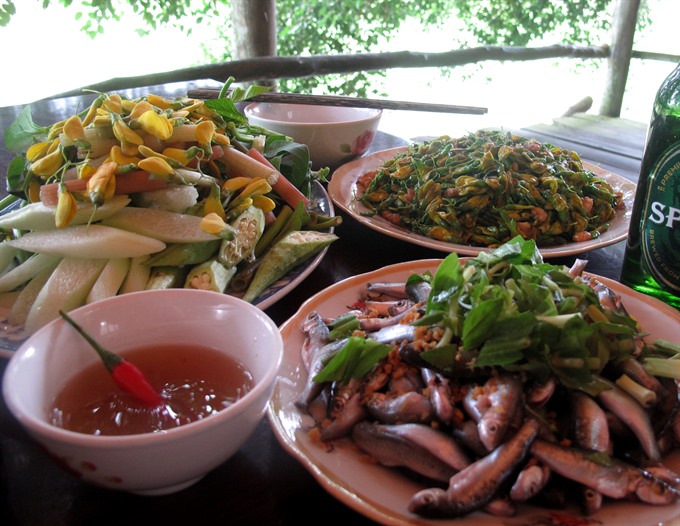 |
| A feast: Many people who make the long trip to Trà Sư look forward to enjoying local dishes available only during the water rising season. VNS Photo Bùi Quỳnh Hoa |
There are many special dishes on offer during the water rising season but the most famous one is the hot pot of linh fish (a kind of fish which can only be found during the water rising season in the Mekong Delta) served with điên điển flowers and other wild vegetables. Then there’s snakehead fish wrapped and grilled in young lotus leaves. Thốt nốt (sugar palm) juice is also a must.
The forest area also boasts many cultural features as a home to the ethnic Khmer and Kinh people who practise several traditional vocations including weaving brocade and silk, making palm sugar, distilling cajuput essential oil and raising honey bees. These are good souvenirs to take home.
Strengthening tourism
Blessed with nature’s many gifts, An Giang is striving hard to develop green, sustainable tourism.
Since early this year, the locality has boosted co-operation with the Southwestern key economic zone, including Cần Thơ City, Sóc Trăng, Bạc Liêu, Cà Mau, and Kiên Giang provinces.
An Giang has also connected with Cambodian localities of Phnom Penh, Sihanoukville, Takeo and Kandal provinces to boost tourism across the border gates of Tịnh Biên in Tịnh Biên District and Vĩnh Xương in Tân Châu Town.
An Giang is home to 82 national and provincial heritage sites, including Bà Chúa Xứ Núi Sam Temple in Châu Đốc District, Núi Cấm (mountain), Trà Sư Cajuput Forest in Tịnh Biên District, and the Óc Eo Culture relic site in Thoại Sơn District.
Phạm Thế Triều, deputy director of the provincial Department of Culture, Sports and Tourism, said multiple new products had been developed to attract tourists to the province.
In the first seven months of this year, An Giang attracted six million foreign and domestic tourists, earning VNĐ1,290 billion ($58 million).
Despite our initial disappointment, we are sure to be part of the millions visiting the Mekong Delta province, particularly the Trà Sư forest.
It’s a place worth returning to, repeatedly. VNS
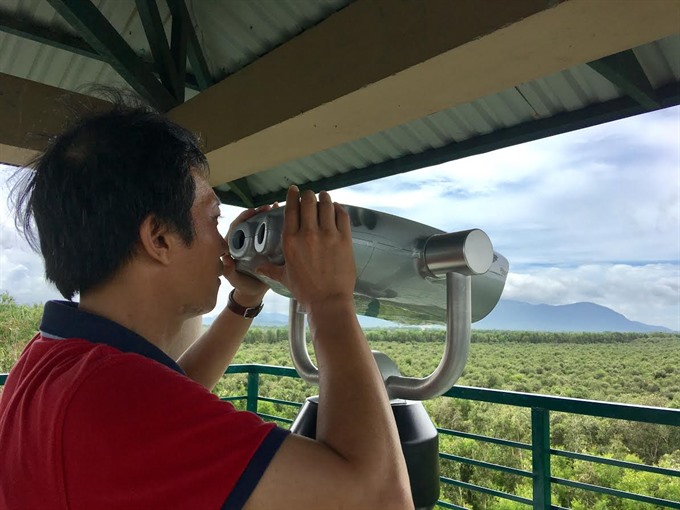 |
| Bird watch: From the Trà Sư observation tower, visitors can see a vast expanse of forest and thousands of birds early in the evening. VNS Photo Bùi Quỳnh Hoa |
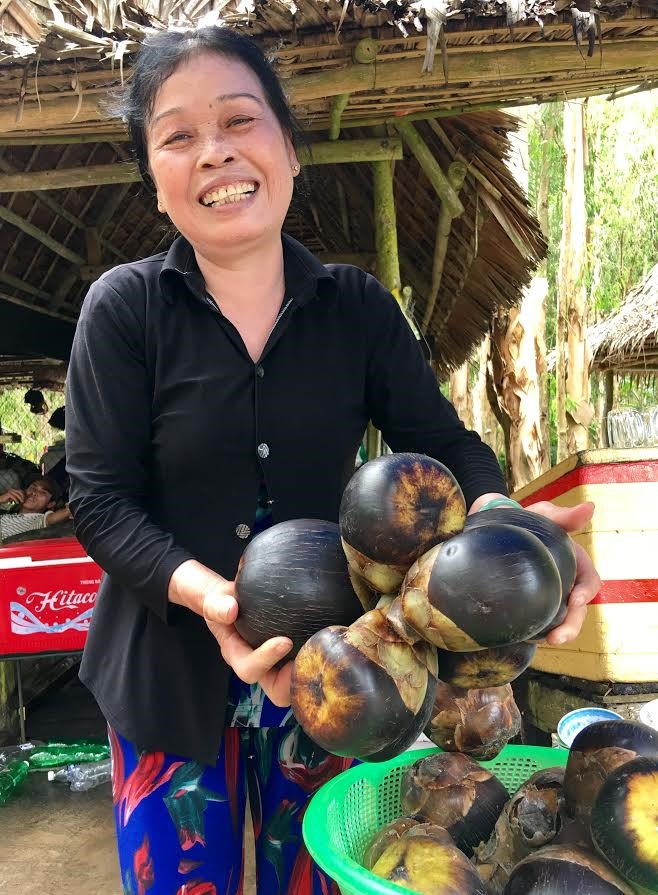 |
| Thirst quencher: Sugar palm fruits help locals earn a livelihood. VNS Photo Bùi Quỳnh Hoa |

